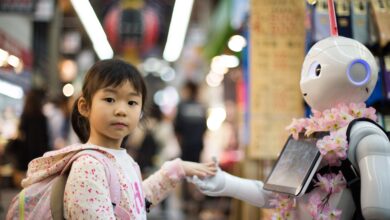
Introduction
Welcome learners, here I Yash Bansal with my second blog of Artificial Intelligence will discuss about the various algorithm in AI. You will also see my previous blog where we will tells about the need and importance of AI in today’s era.
What, then, is an AI algorithm? “A collection of instructions to be followed in computations or other activities” is the definition of an algorithm. This is true for both computer science and mathematics. An AI algorithm is therefore, fundamentally, the code that instructs the computer on how to learn to function independently.
Of course, an AI algorithm is considerably more complicated than what most people learn in mathematics. AI algorithms are guided by a complicated set of rules that determine their actions and capacity for learning. AI wouldn’t exist if it weren’t for algorithms.
Types
Supervised learning, unsupervised learning, and reinforcement learning are the three main kinds of AI algorithms. These algorithms’ main distinctions are in how they are learned and how they work. There are dozens of distinct algorithms under those categories.
Working
A generic algorithm may be straightforward, but AI algorithms are by definition more sophisticated. Algorithms for artificial intelligence (AI) learn by ingesting training data. The primary distinction between various types of AI algorithms is how that data is collected and classified.
At its most basic level, an AI algorithm employs training data—labeled or unlabeled, provided by programmers or gathered by the programme itself—to learn from and evolve. Then, using the training data as a foundation, it completes its job. Some AI systems may be trained to learn on their own and incorporate fresh information into their decision-making process. Others will require the assistance of a coder to streamline.
Supervised Learning
“Supervised learning” is the first and most widely utilised category of algorithms. These function by ingesting data with obvious labels while being trained, then using that data to learn from and improve. It makes predictions for other data using the labelled data. The term “supervised learning” refers to learning that takes place when a teacher or other expert is present.
A team of committed professionals is required to assess and verify the outcomes, as well as data scientists to test the models the algorithm generates to confirm their correctness in comparison to the original data and detect any AI flaws.
Classification and Regression Definitions
We immediately begin describing the various supervised learning strategies below. They may all be applied to regression, classification, or both.
Classification is the use of binary data (0 = no, 1 = yes) to get either/or results. As a result, the algorithm will only ever categorize things as one or the other. Additionally, there is multi-class classification, which deals with classifying data into specific types or categories that are pertinent to a given requirement.
Regression indicates that the outcome will contain a real number (either round or a decimal point). Typically, the method will take both points from the independent and dependent variables to predict a potential alternative outcome (either forecast or generalised estimate).

Unsupervised Learning
In contrast to supervised learning, it may now be rather simple to infer what unsupervised learning algorithms mean. The data used by unsupervised learning algorithms isn’t labelled. Unsupervised learning algorithms make use of this unlabeled data to build models and assess the connections between various data points in order to provide the data with additional context.
Clustering
Numerous unsupervised learning algorithms carry out the clustering task, which entails grouping the unlabeled data points into predetermined groupings. Each data point should only have a single cluster as its home, with no overlap. A data point cannot be a member of more than one cluster, yet there may be more than one data point in a particular cluster.
Reinforcement Learning
Reinforcement learning algorithms, which learn by incorporating input from an action’s outcome, are the final main category of AI algorithm. Usually, this takes the form of a “prize.
An agent that performs an action and the environment in which the action is performed typically make up a reinforcement algorithm. The cycle starts when the agent receives a “state” signal from the environment. This places the agent in line to carry out a certain task inside the environment. After the activity is completed, the environment notifies the agent through a “reward” signal what transpired, allowing the agent to update and assess its previous action. The action can then be taken once more using the new knowledge. That cycle repeats until the environment sends a termination signal.
You can also comment down your interested topic for next blog till then keep hustling and keep learning with THEAX .




